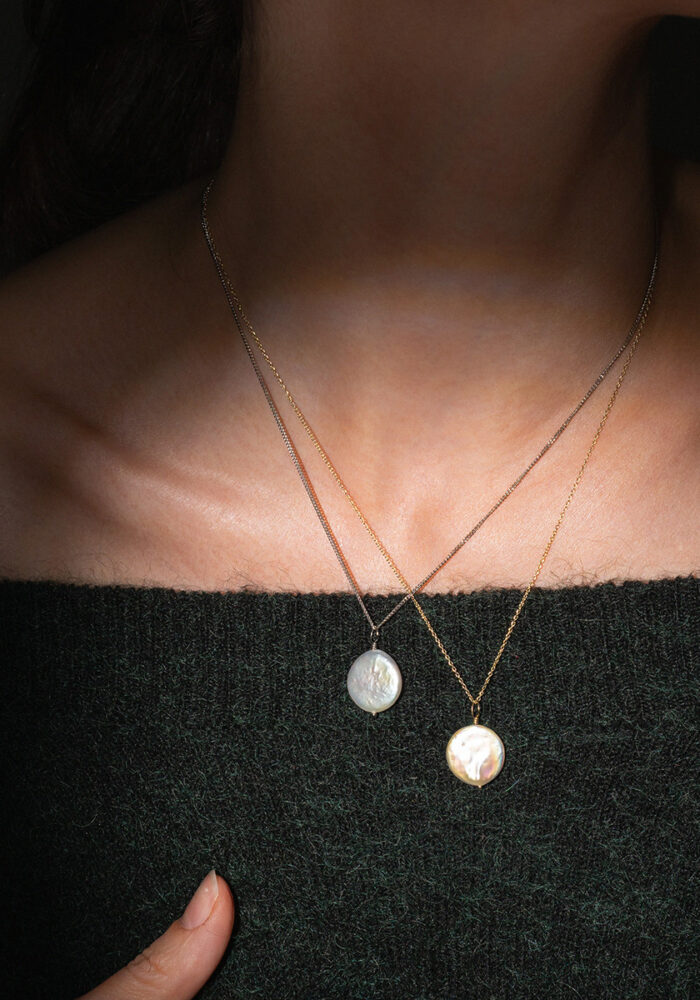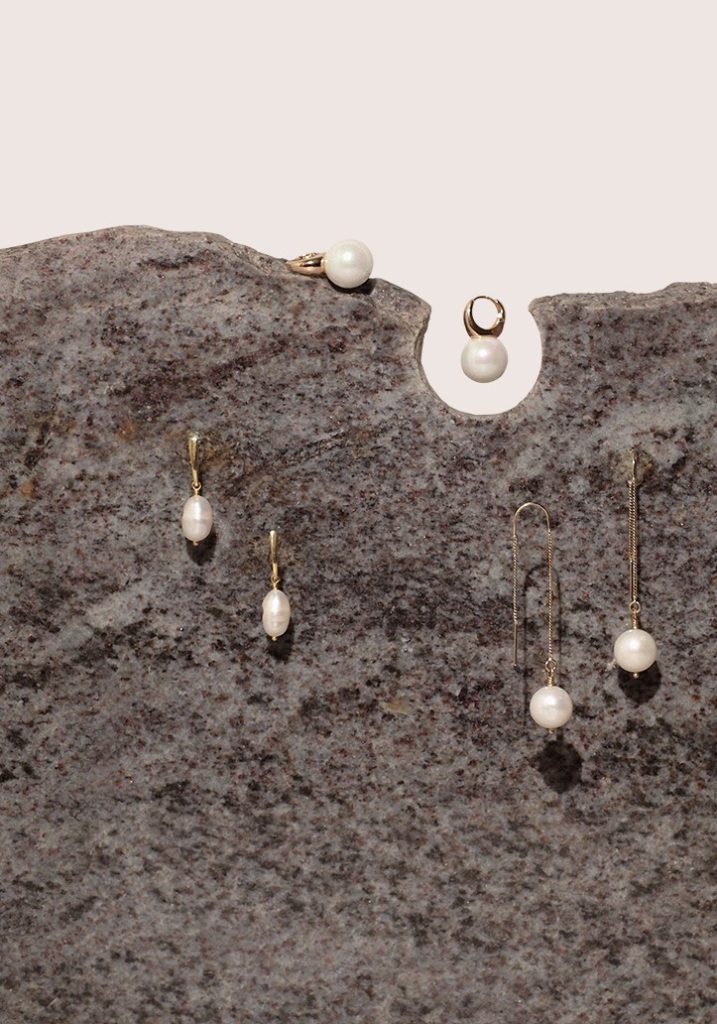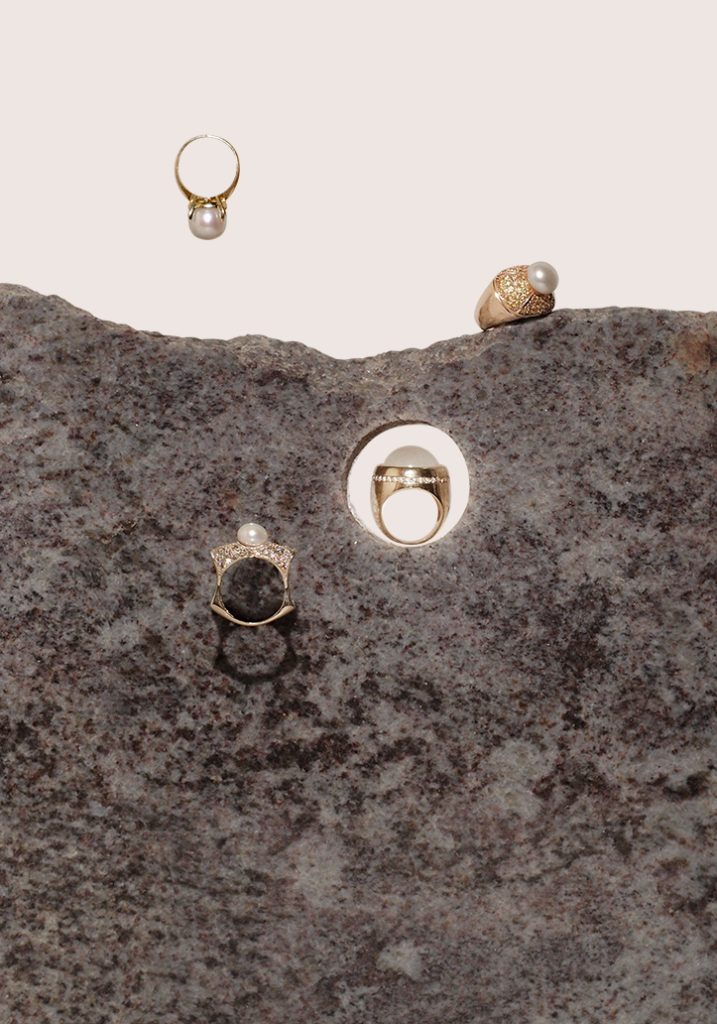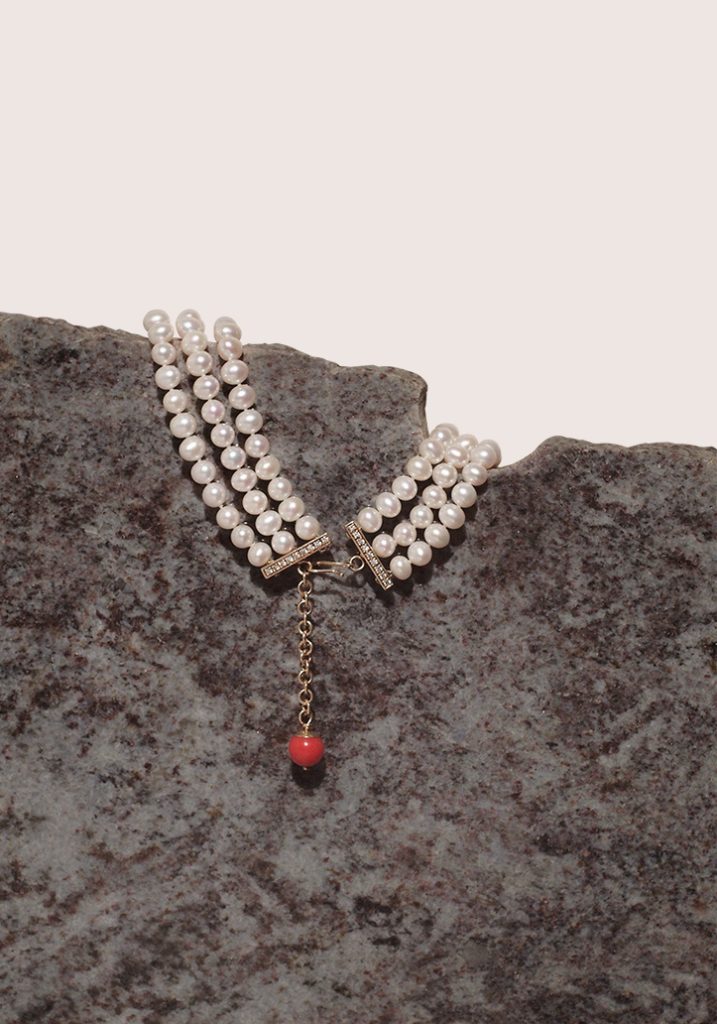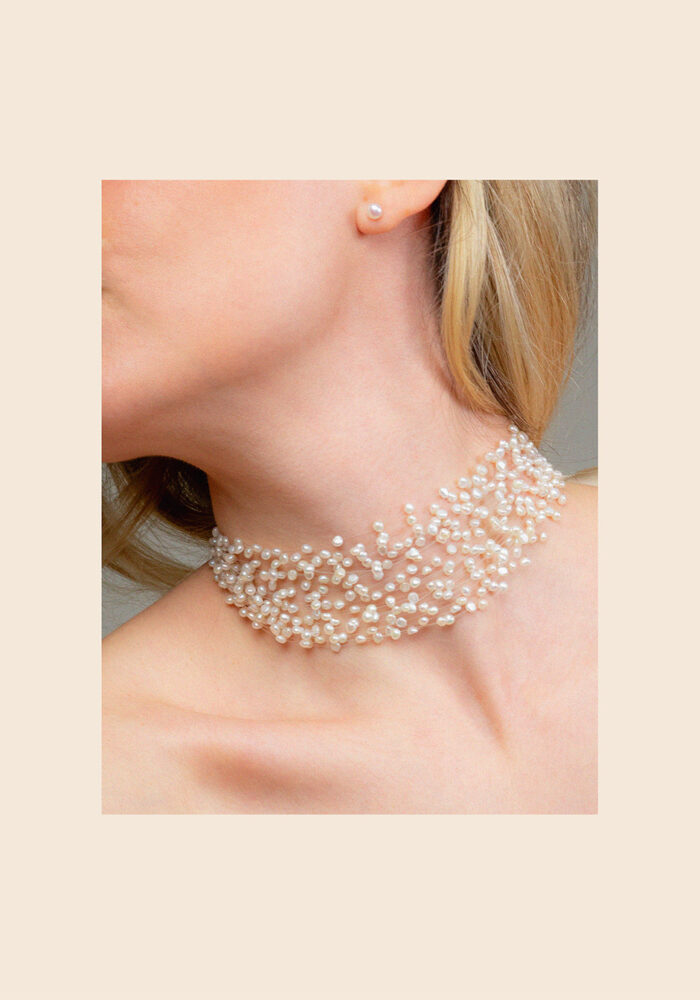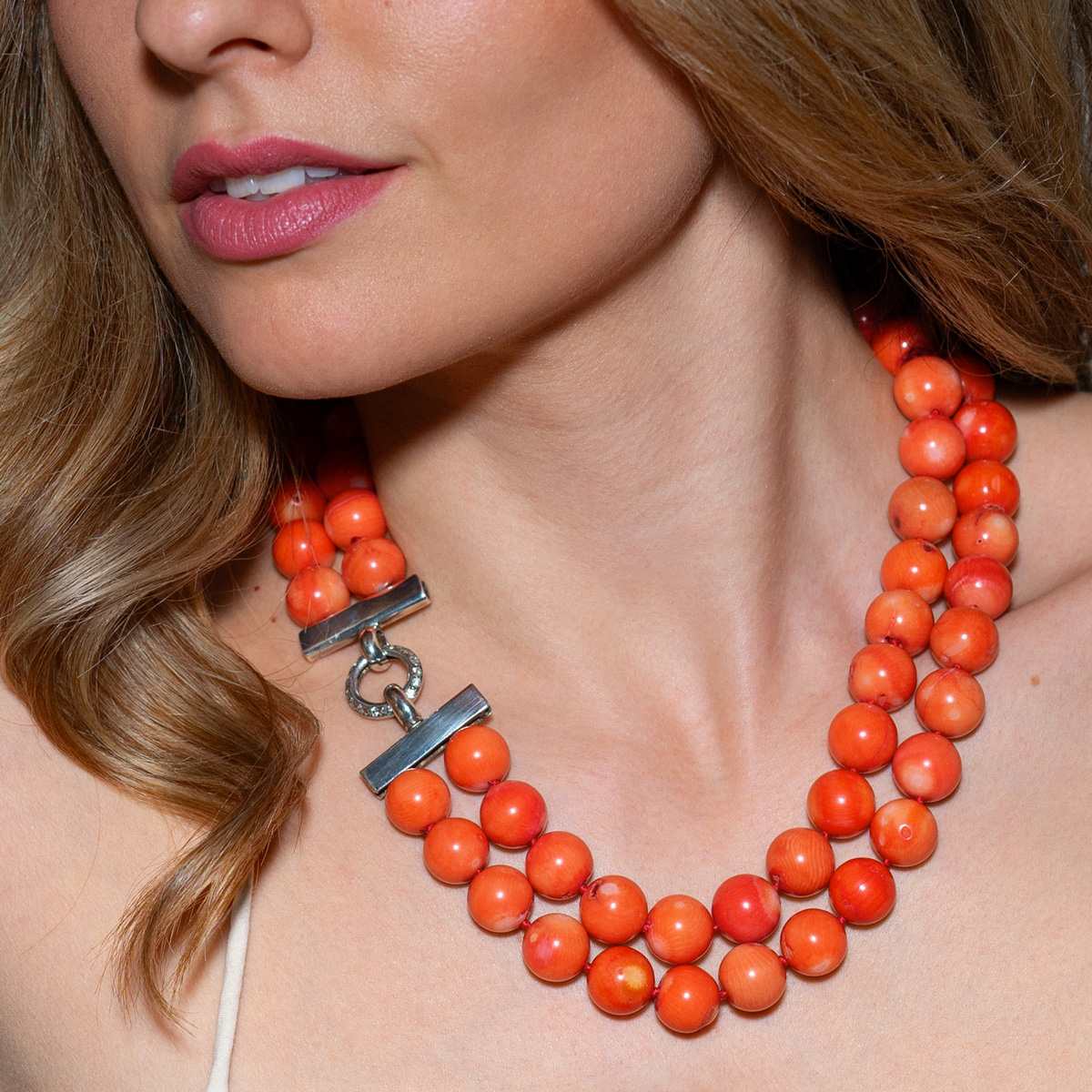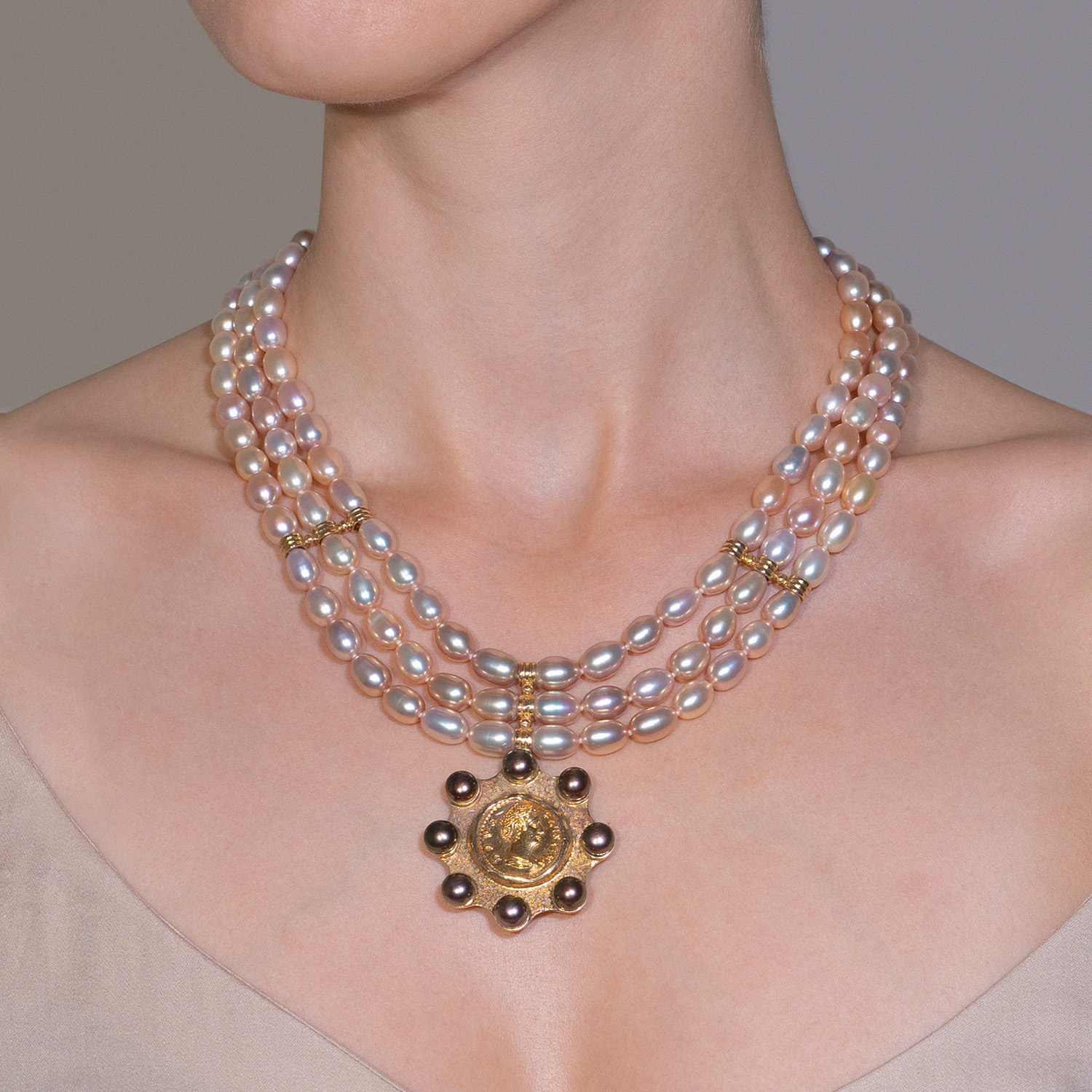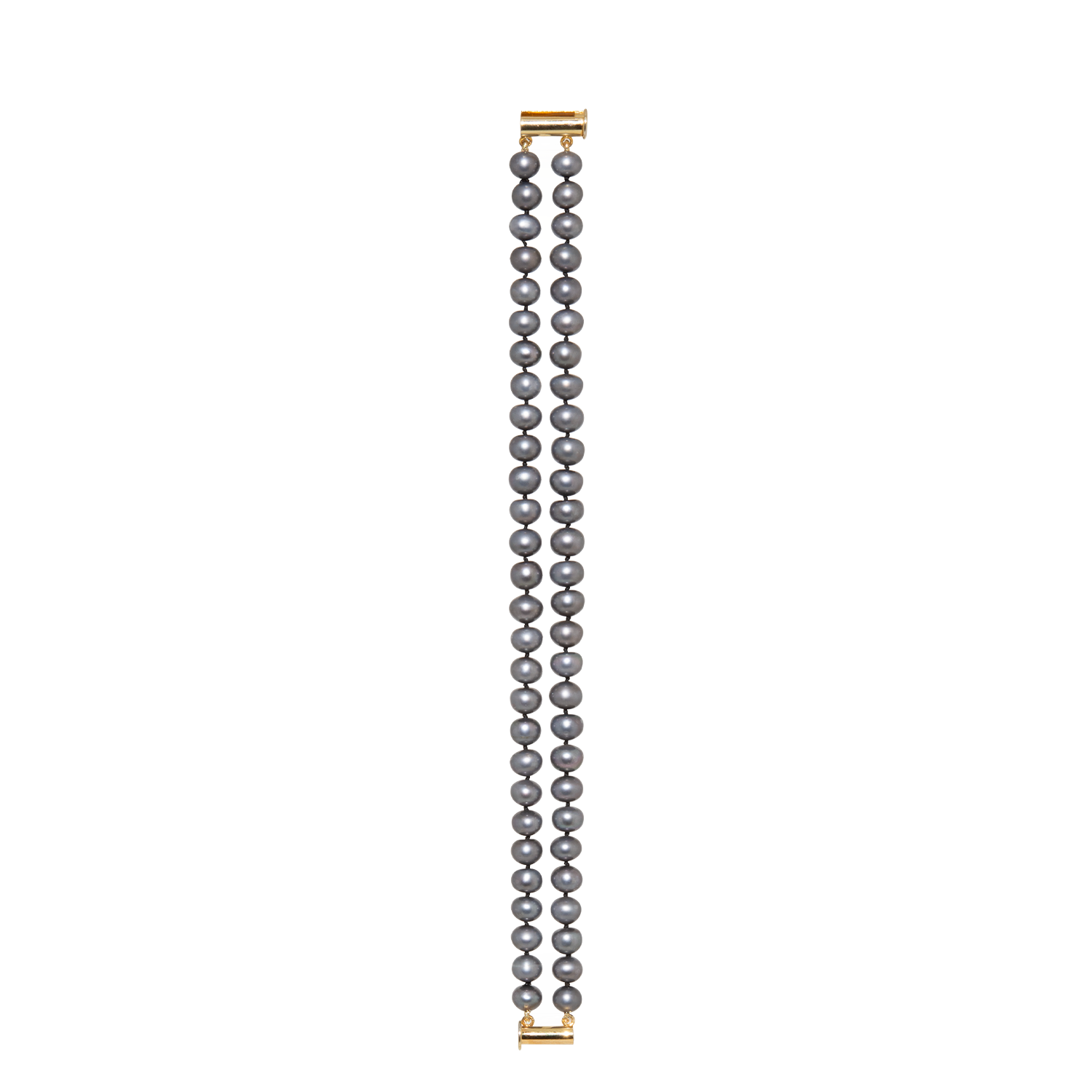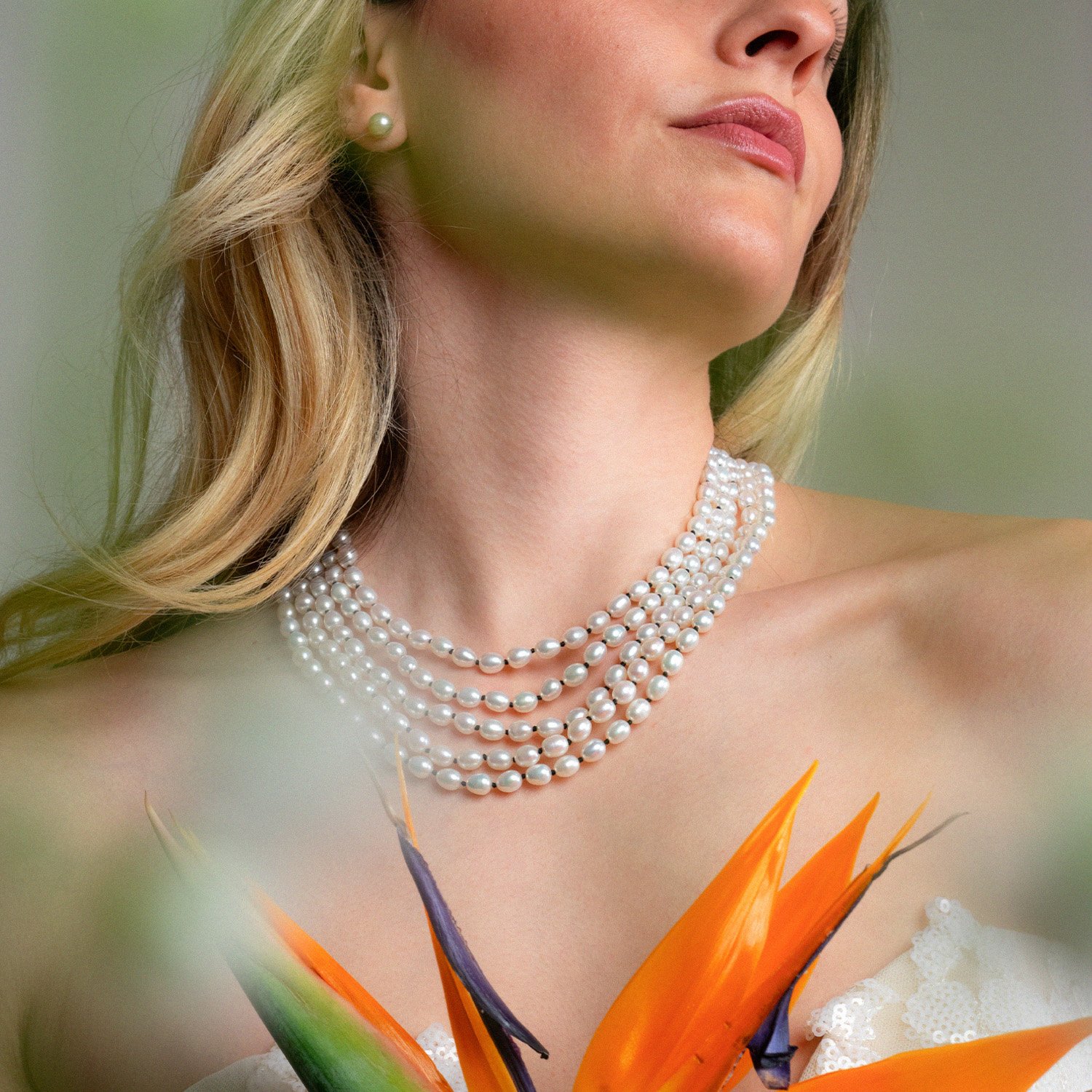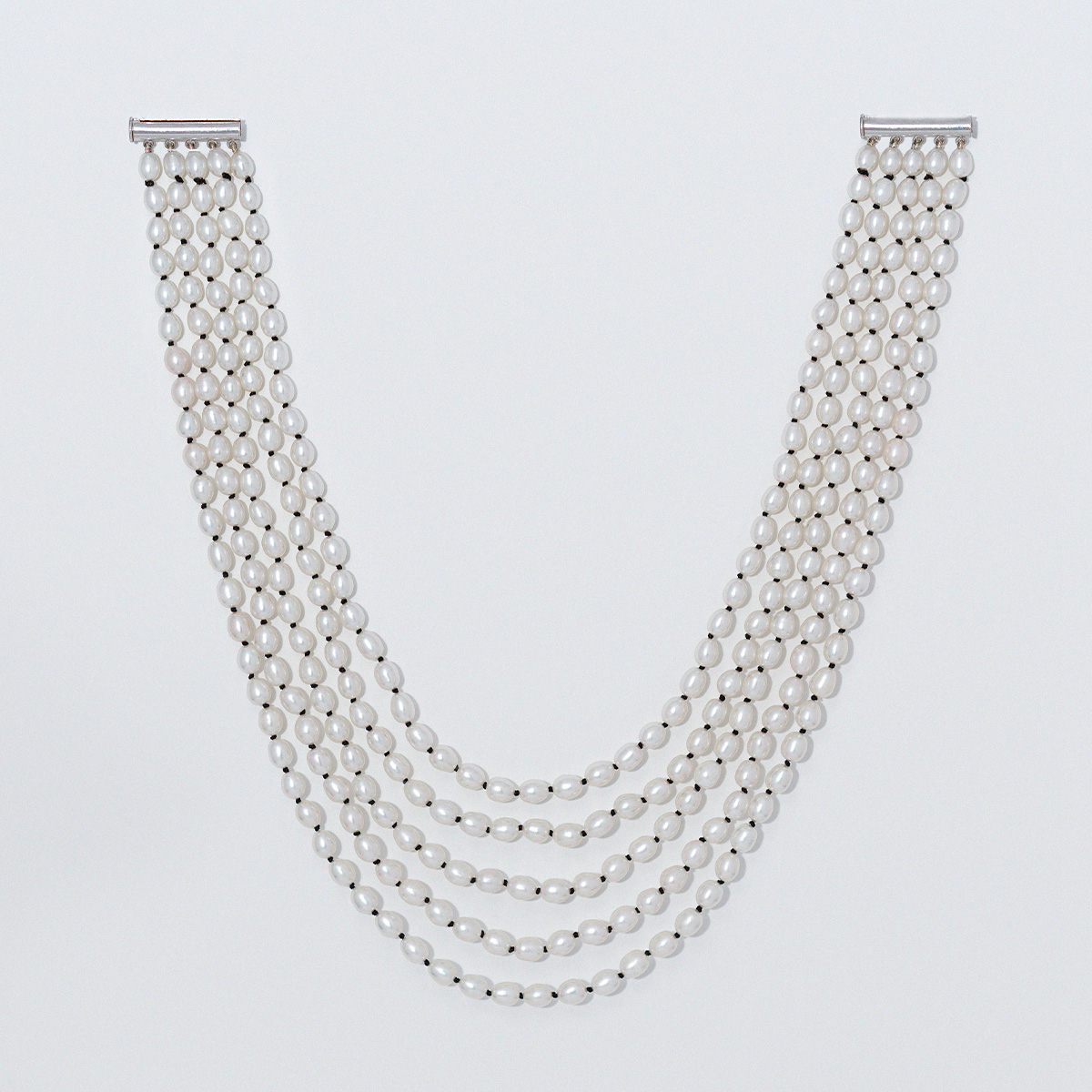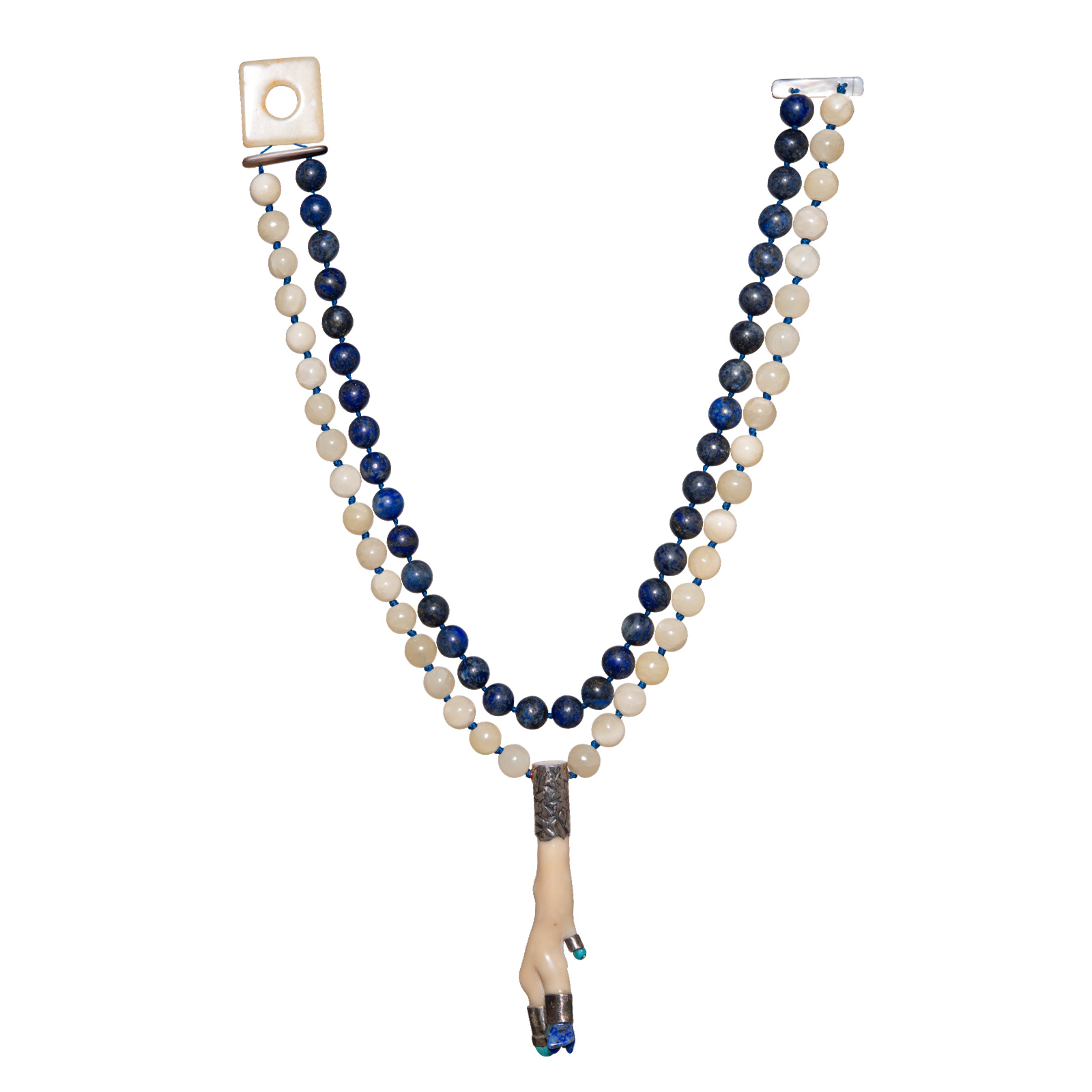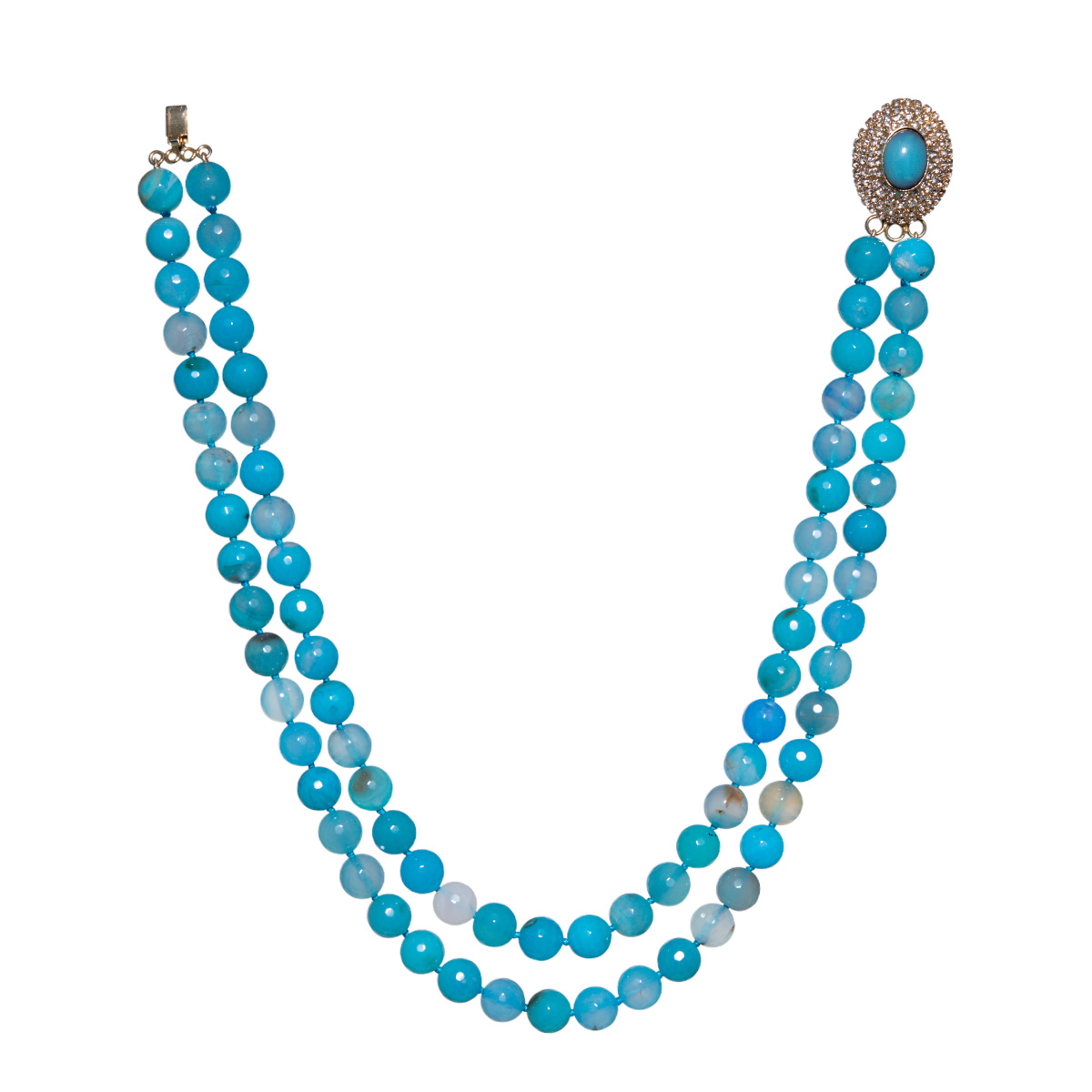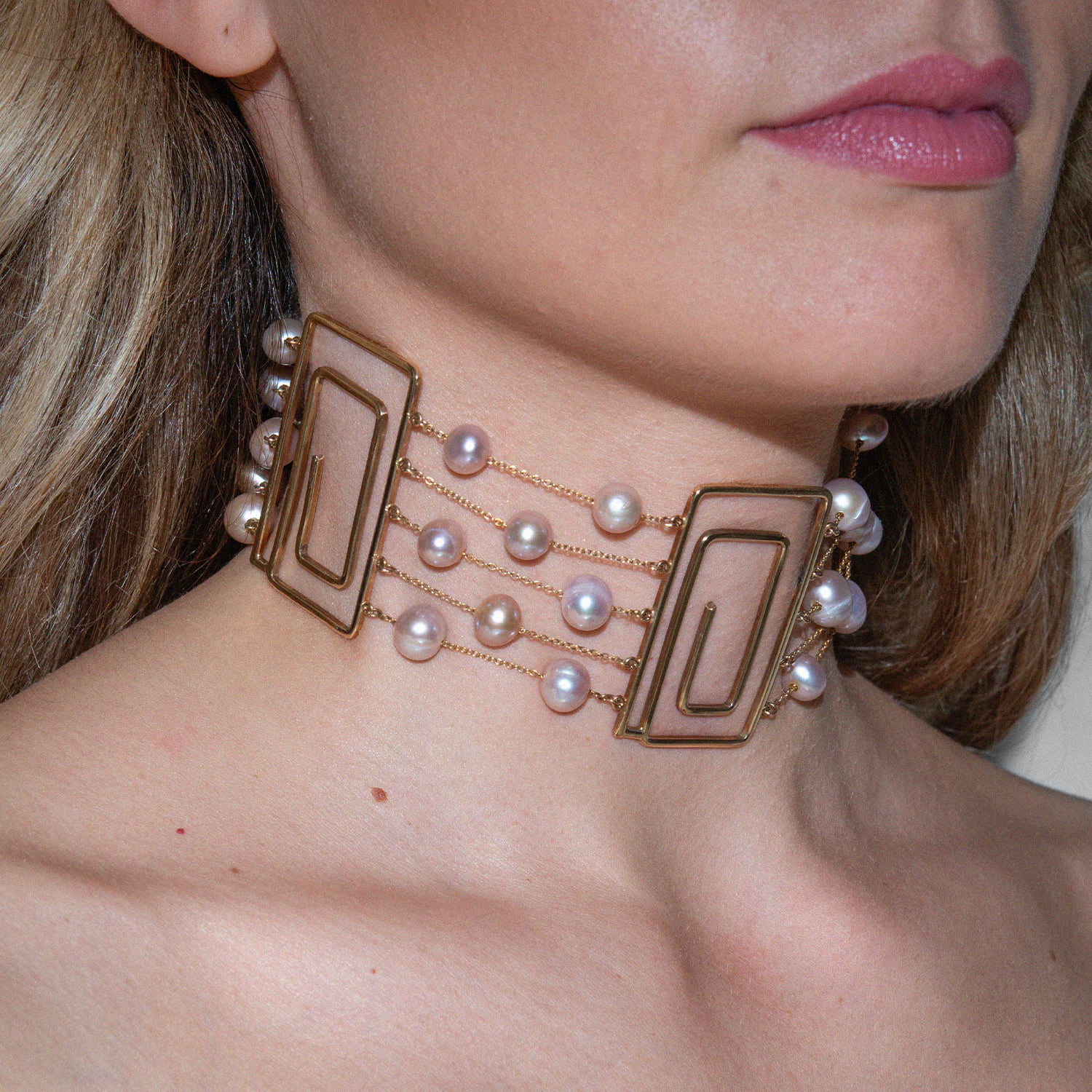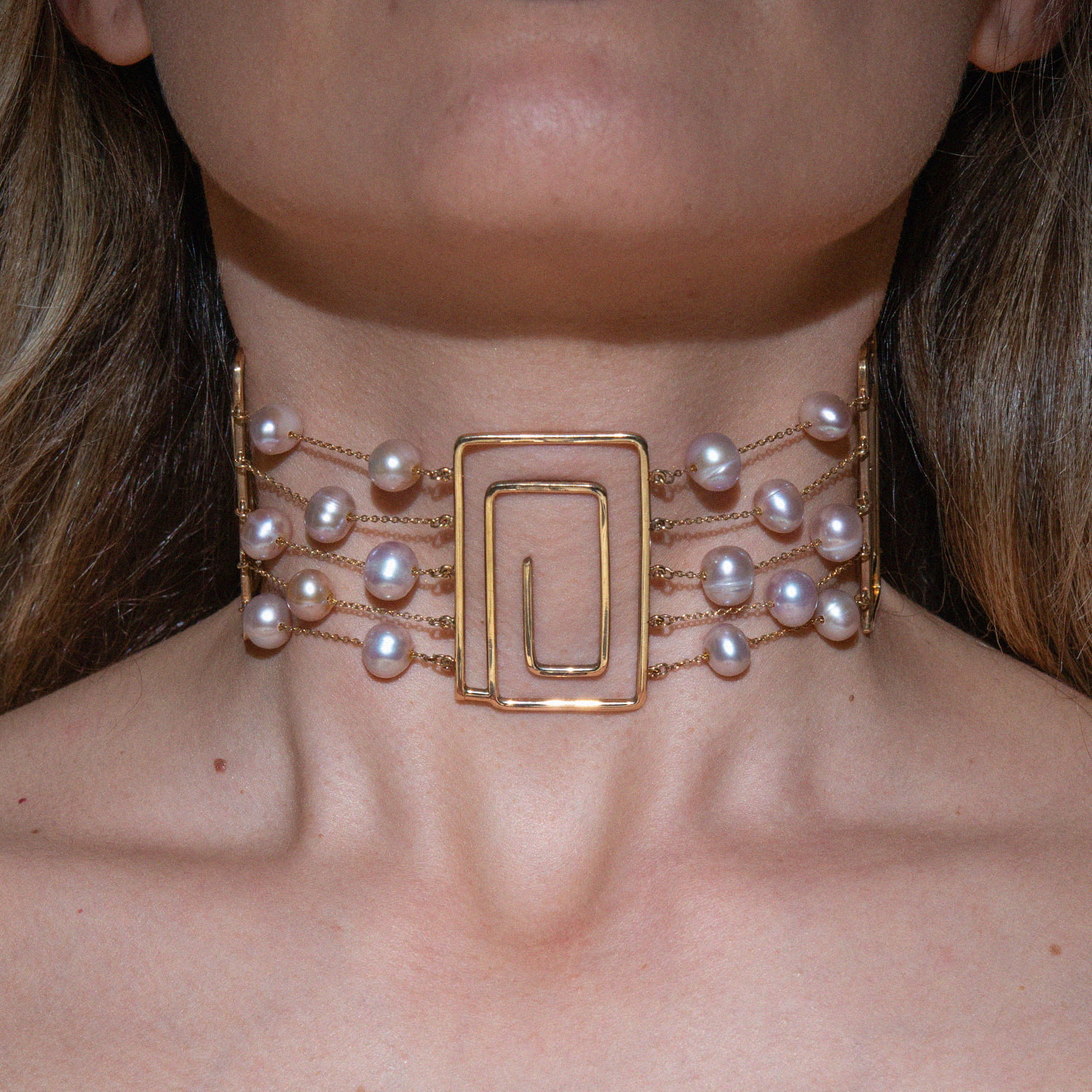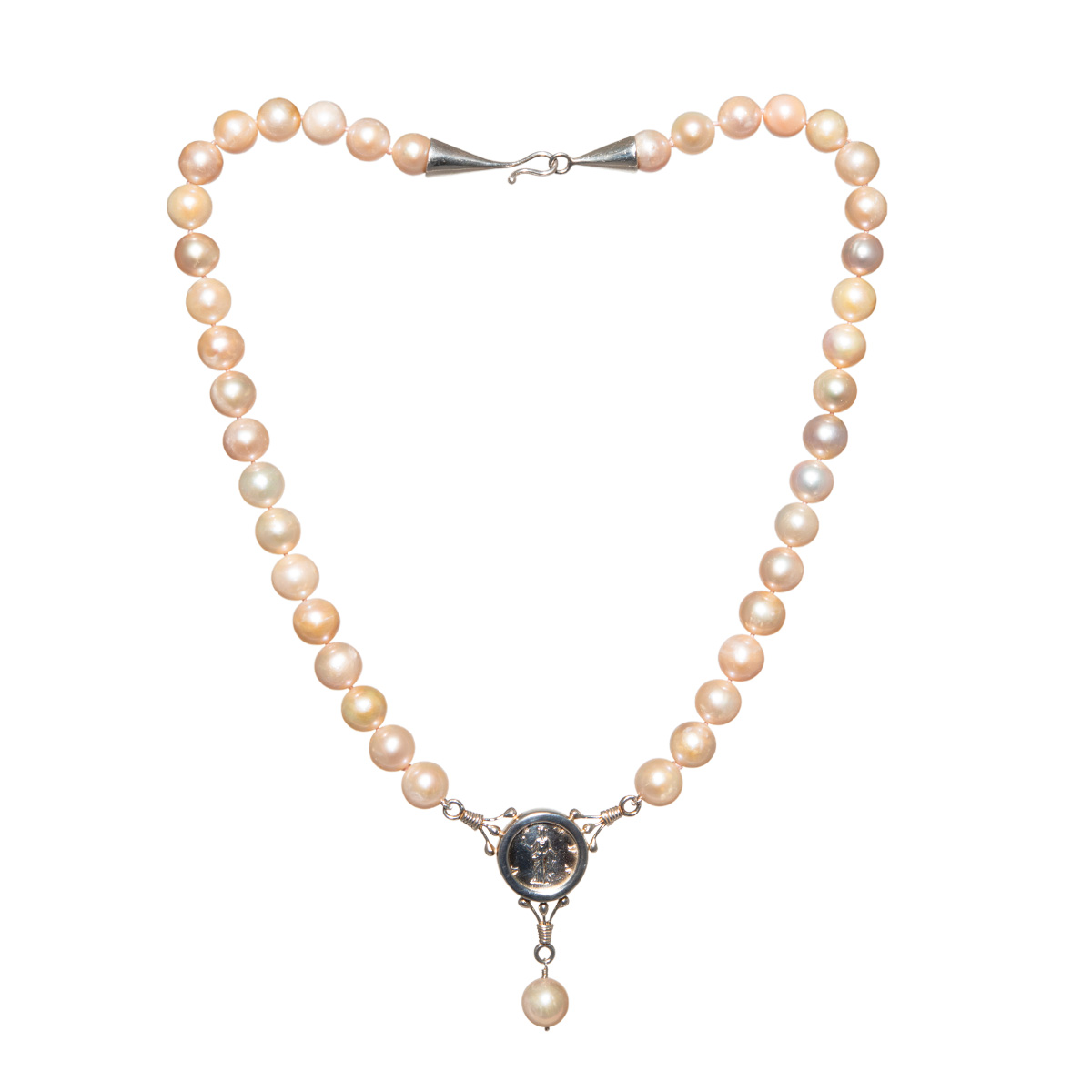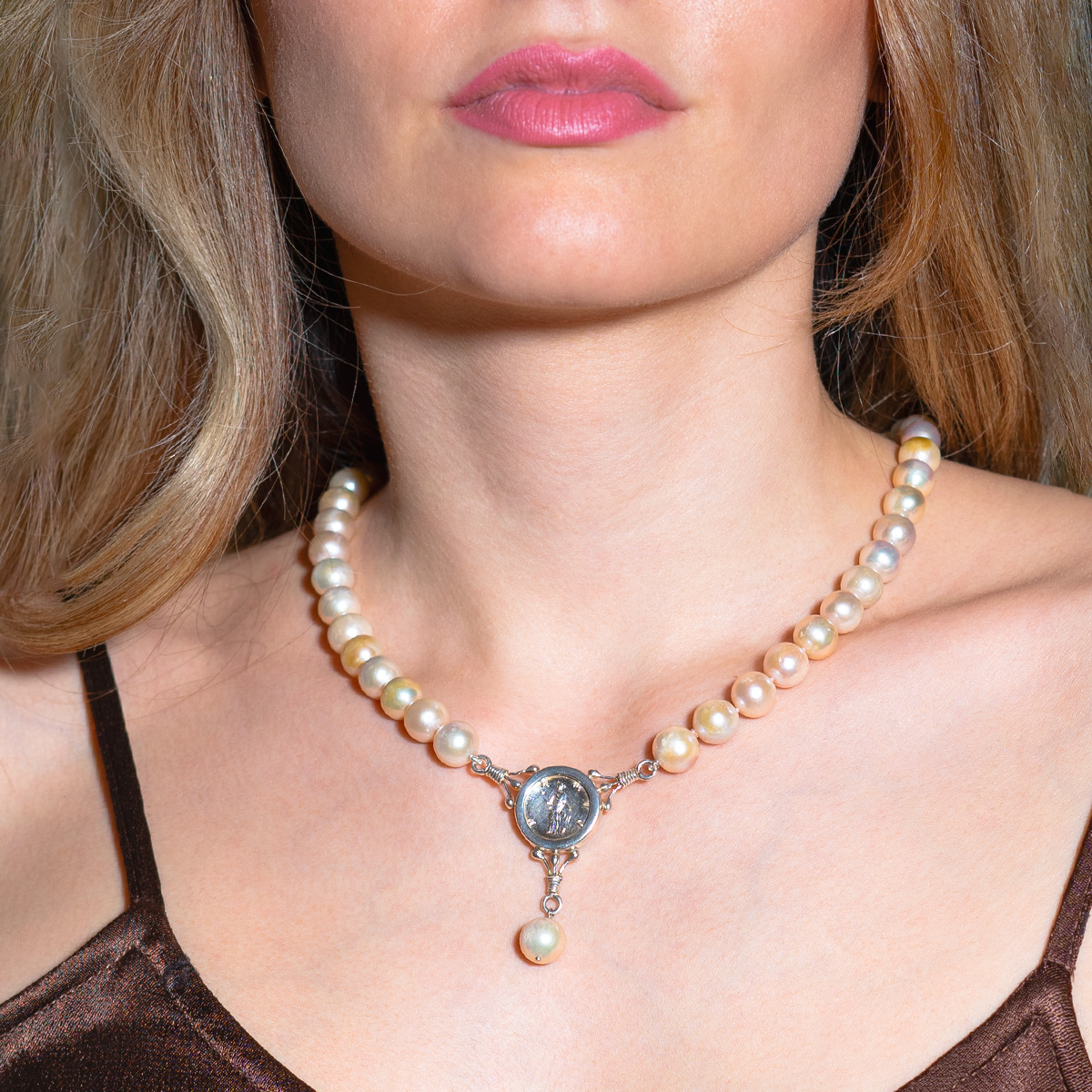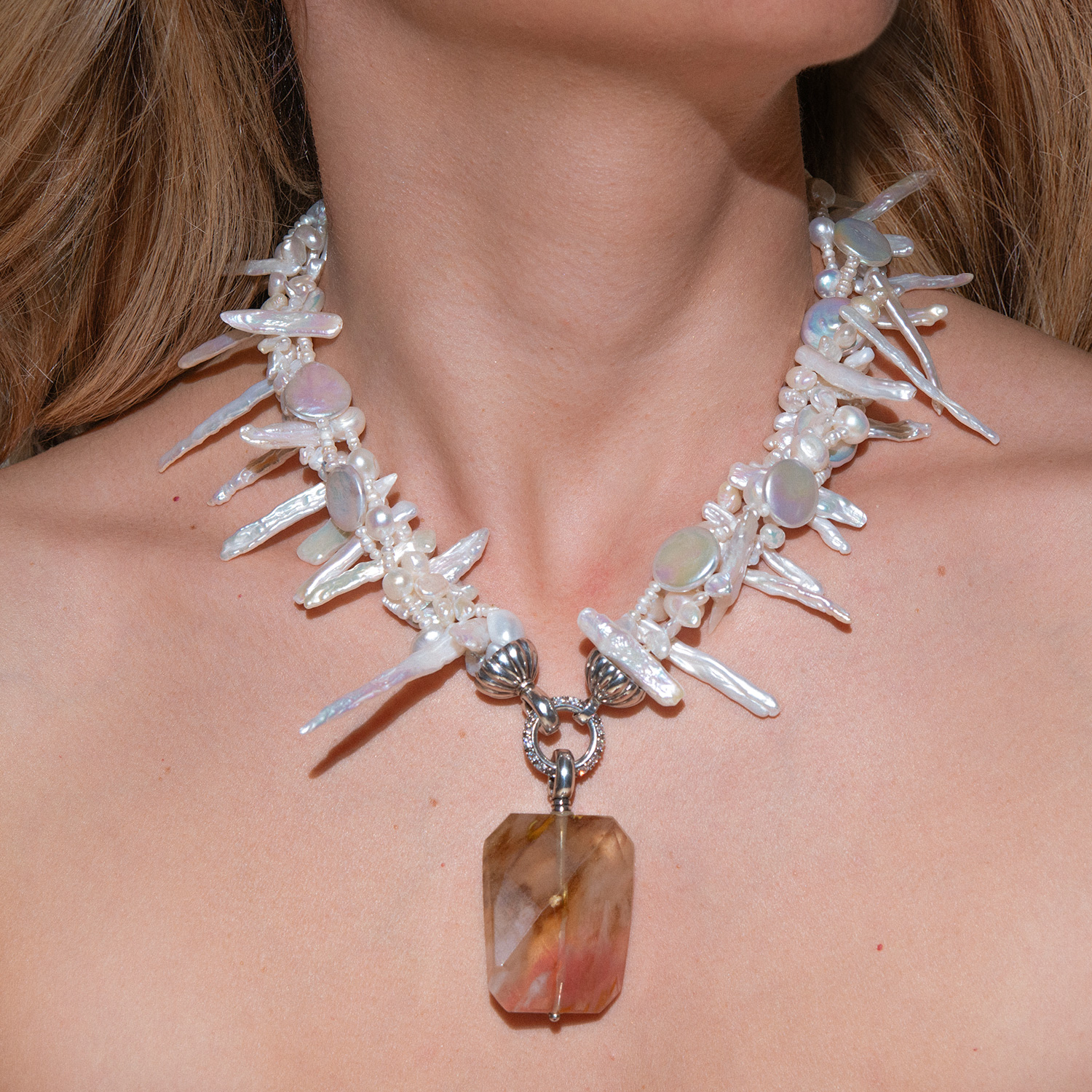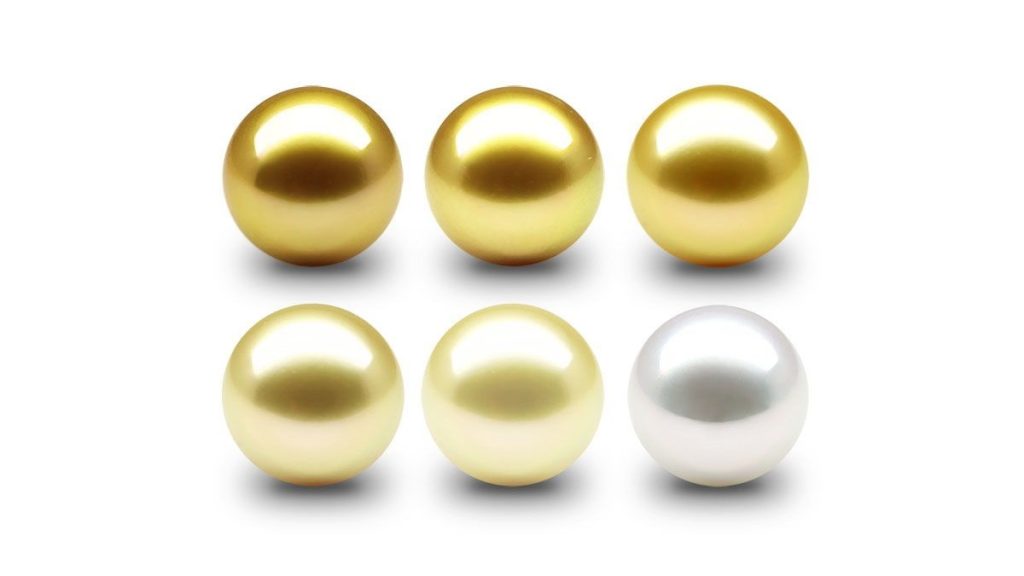What are cultured freshwater pearls?
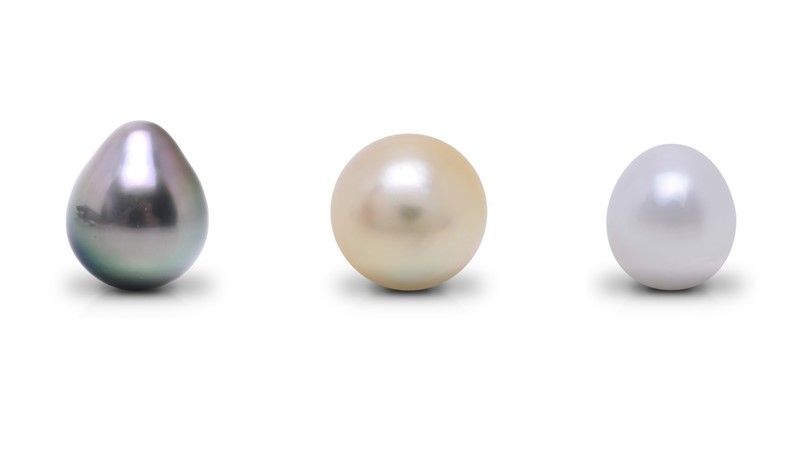
Cultured pearls gained a really significant place in the market when plastic buttons on clothes became the norm. Prior to that, most buttons were selvedge, made from the shells of mollusks, forming pearls naturally. As these shells were harvested to be turned into buttons, the natural pearls within them were found accidentally and were therefore rare and valuable - a particularly highly sought after commodity in the market. However, once the shells were no longer needed for the production of buttons, the collection of molluscs declined significantly and, consequently, the place of natural pearls in the industry was no longer the same. This created a great opportunity to grow pearls and create cultured ones, which in a short time took over the market and became the huge industry they are today.
Cultured pearls can be broadly divided into two types - freshwater and saltwater. The main differences between these types are that in freshwater mussels only a small piece of mantle from another mussel is placed and the pearl that results is shaped as nature decides and is characterized by an entirely dense sediment, from the core to the surface. In the case of salt-water oysters, in addition to a piece of mantle, a nucleus is placed - a sedimentary ball around which the oyster now begins to form a sedef. Thus the pearls themselves become larger and rounder, but they have a relatively thin layer of sedef that is formed around this core, making them less durable, and not as close to fully natural pearls.
Another distinguishing characteristic between saltwater and freshwater pearls is where they are implanted. In saltwater oysters, the tissue and bead are implanted into the gonad (sex organ) of the mollusk, and then a whole saltwater pearl is expected to form around the inserted nucleus. In freshwater mussels, small pieces of tissue are implanted into the mantle of the mollusc. In contrast to implantation for saltwater pearls, several pieces of tissue placed in the mantle of a freshwater mussel usually result in several cultured pearls at once. The technique for culturing saltwater pearls, normally results in the production of only one pearl in the oyster.
There are several modern methods used to culture whole pearls. The two most commonly used are the implantation of germ tissue and the production of so-called second generation, and farmers are constantly looking for ways to improve their methods by continuing their work and research in this direction.
This method of culturing pearls begins with mussels that are approximately 6-12 months old. Growth time takes about 3 to 5 years (although some freshwater pearls may take up to 7 years before reaching full maturity). Because of natural and scientific factors (they do not have a round core in them), pearls produced through this process differ from one another in size and shape. As such, only a very small percentage of all pearl production consists of round or nearly round shapes. In fact, only about 2% of the pearls grown by this method are considered round or nearly round. In VELMAR, pearls with such characteristics can be found, which are considered to be the best in the pearl world.

Pearls produced in a shell with germ tissue are usually button, oval, baroque, semi-baroque or teardrop shaped. They range in colors from white to orange (or "peach") and from gold to lavender and purple. The quality of pearls can also vary widely from "low grade" pearls that are either discarded or used as an ingredient in cosmetic or health recipes, to commercial grade pearls suitable for both low and high end jewelry designs. Of the estimated 1,600 tonnes of freshwater pearls produced in China each year, only about 882 tonnes of them are considered good enough to be incorporated into jewellery and subsequently distributed commercially.
The production of freshwater pearls through the second-generation cultivation process is less common, simply because of the inherent characteristics of the process. It is not a commonly used method, mainly because first generation mussels usually die after their first harvest. On most farms, only 10% of mussels remain alive after harvesting their first pearls. Some farms are working on this negative phenomenon and have reduced the mortality to around 60-70%, but it is still at 90% on most freshwater pearl farms.
Second generation production only works at 10% from mussels that remain alive and that have produced high quality pearls in their first harvest. Only these are assumed to be able to produce cultured pearls of significant value in a repeat harvest.
Each mussel that survives the initial harvest, and is considered suitable for a second harvest, typically retains 24 to 32 pearl sacs in its mantle. Farmers either return the mussel nets directly to the water, just as they did the first time, or decide to implant certain types of core into these pearl sacs so that the mussels can release sedef around them and thus form different types of shapes. Regardless of the method used the second time around, the resulting pearls are always labelled 'second generation cultured pearls'.
Manufacturers using the second-generation method often reveal that the quality of the pearls produced is inferior to that of the first generation. This is mainly due to the fact that the pearls produced by this method are baroque or button-shaped rather than round or nearly round.
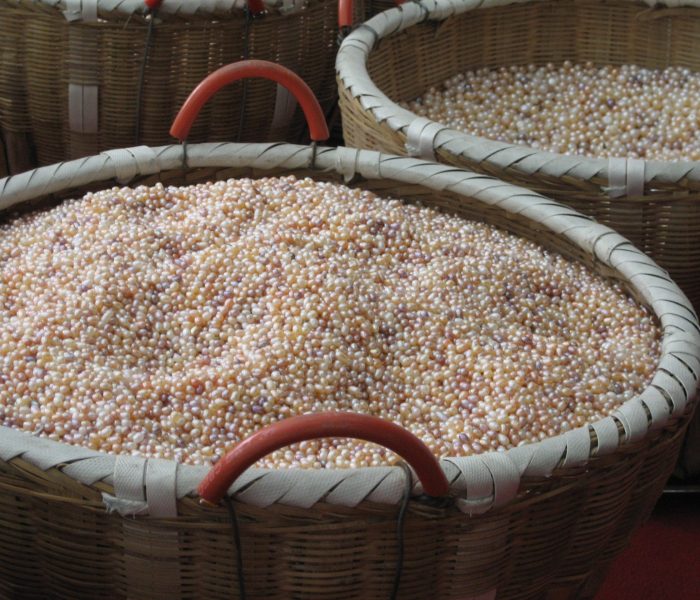
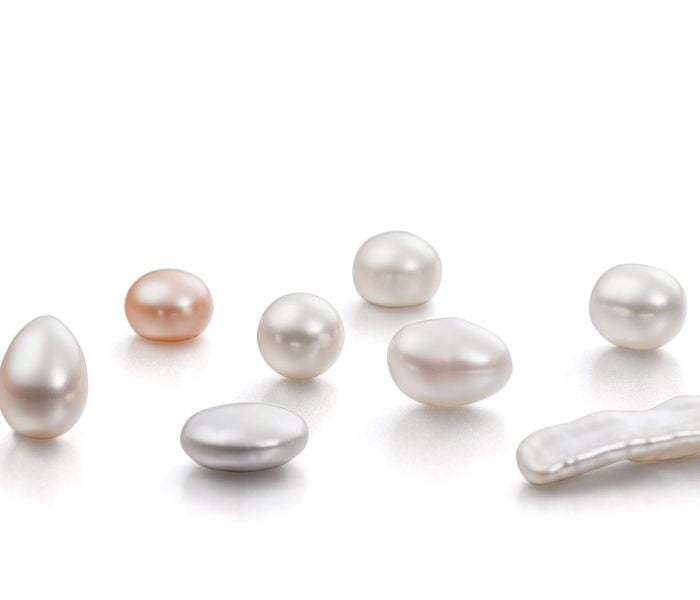
At VELMAR we have chosen to use mainly freshwater cultured pearls for our premium pearl jewellery. We want the best for our customers - quality and affordability. We carefully inspect each and every pearl we use to ensure it fits our high standards and is comparable in quality to far more expensive pearls. The technology involved in growing and producing freshwater pearls is now so advanced that pearls with perfect characteristics (shape, surface smoothness) rivaling those of the finest Akoya pearls can be found. Freshwater pearls are distinguished by a soft and warm lustre, different from that of saltwater pearls, and are judged accordingly by different criteria. Also, they do not have a round core in them, which ensures that they are made up of dense layers of sedef, from the core to the surface, rather than just a relatively thin layer of sedef formed on a round bead. This makes them much more durable and easy to maintain, and brings them as close as possible to fully natural pearls, in terms of the way the pearl is built and the structure.
Quality and affordability aren't the only reasons we choose freshwater cultured pearls for our jewelry. The fact that there is no core to determine the shape, and the very characteristics of the shells in which they grow, result in such a wide variety of colors, shapes and sizes in freshwater pearls that our designers' creativity is inspired just by stopping to look at them! Not only are our jewels attractively and affordably priced considering the quality they carry, but also at VELMAR you will find jewels suitable for any occasion.
Due to the lack of ways to track and document freshwater pearl farming, there is no way to know exactly how many cultured pearls, farms, and producers currently exist. The most recent, rough, estimate of the average annual production of freshwater pearls is 1,654 tons, which, all told, means that over two billion cultured pearls are farmed each year (freshwater pearls suitable for use in jewelry alone, exceed 13 times the total world harvest of all saltwater pearls!)
Although freshwater pearls are the most popular pearls you may encounter, perfectly round, lustrous and smooth freshwater pearls are extremely rare and valuable (under 3% of world production). High quality freshwater pearls, such as can only be found in the most reputable jewelry stores around the world, as well as in the extensive VELMAR collection, have their value quite high. However, freshwater pearls remain the best value of all types, and their beauty, variety and uniqueness make them a great choice when you want to get a piece of jewellery for life.
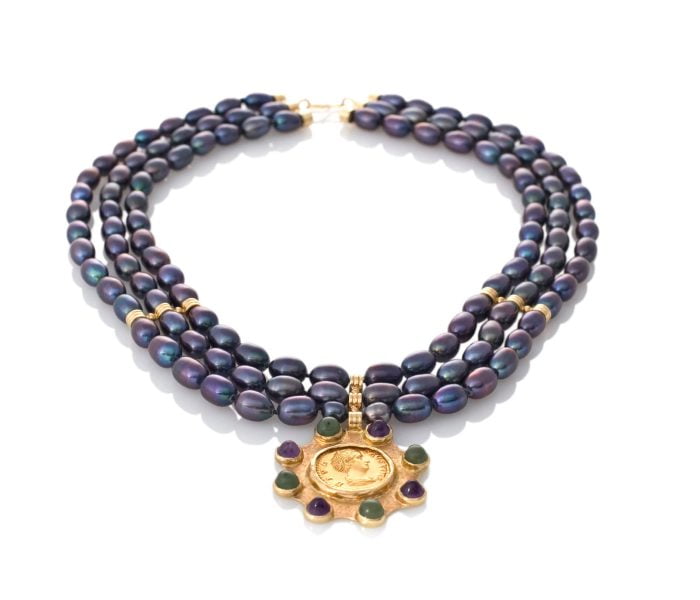
Velislav Ivanov

Wondering how affordable freshwater pearls can be and if you can find high quality ones for your budget? The answer is ‘YES’!

